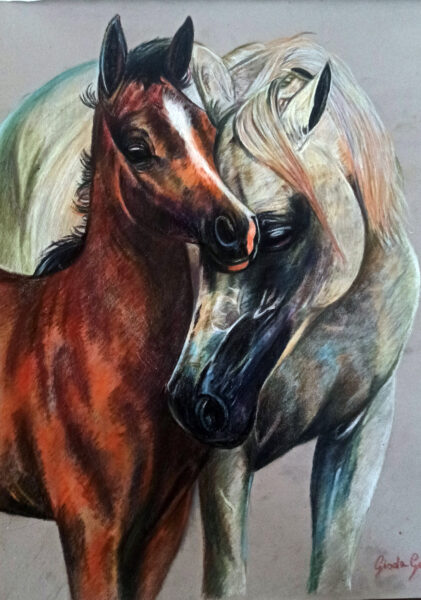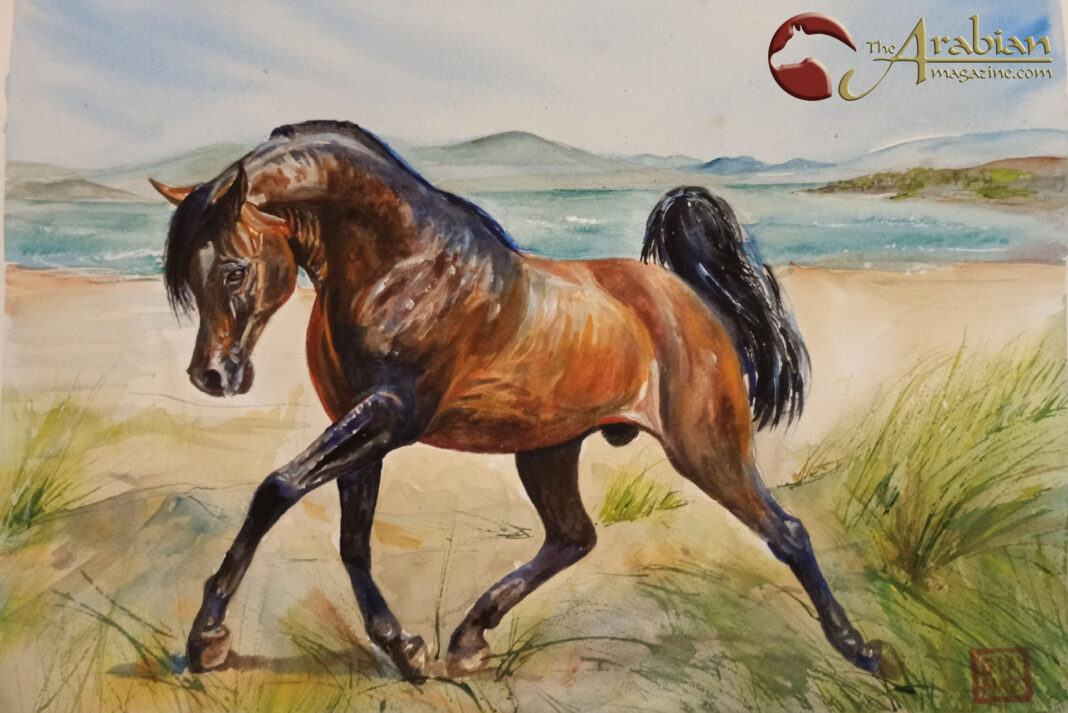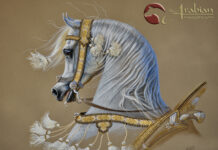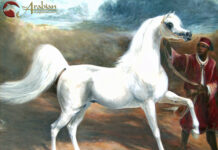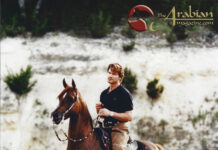Italian artist Giada Gaiotto talks about her background as an artist, as well as sharing some of her beautiful Arabian horse paintings.
When I read CVs prepared for exhibitions or publications, it makes me smile how different they can be, since I am inspired by different worlds – equestrian, entomological, alpine fauna, sports – and each time, I try to bring out the path that brought me there!
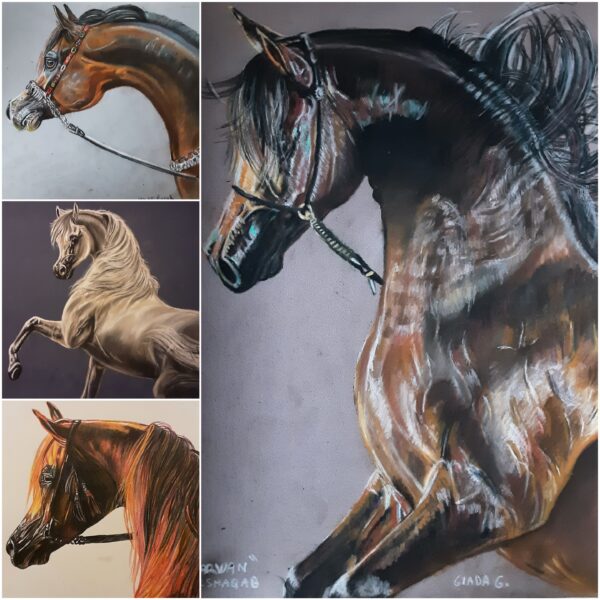
The art critic Angelo Mistrangelo writes: “Giada Gaiotto’s narration from time to time, underlines the charm of trotting races or of a feat by Marco Pantani or the extraordinary performance of the Italian fast relay at the Tokyo Olympics.” A varied world!
Born into a family of mathematical geniuses, I preferred to follow my artistic vocation without hesitation, even if drawing requires mathematical relationships that are anything but trivial. I immediately began to observe the animal world with attentive eyes: from insects to domestic felines, from wolves to horses. Pencils, colours and lots of paper: a copy shop near home, given my interest, provided me with leftover sheets and recycled cardboard, and I never stopped surprising people with the animal faces that I drew without stopping. Friends at home have folders full of Arabian horses that I drew and gave as gifts.
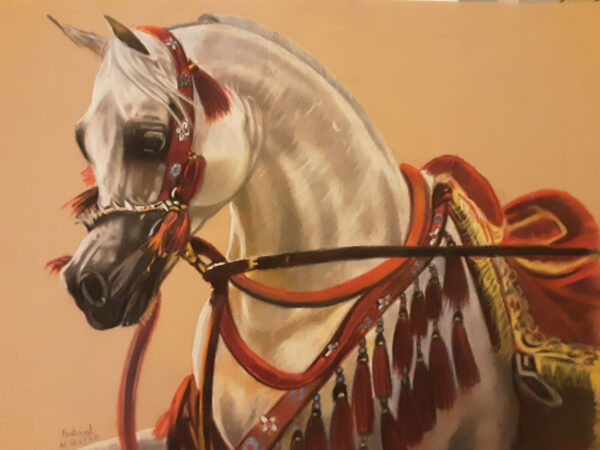
It seemed right to everyone in the family to support my artistic studies, which ended with a 1st and 2nd level diploma at the Albertina Academy of Fine Arts in Turin.
The Arabian horse has always had a particular and decidedly large space in my academic path, to which I dedicated my degree thesis at the Academy, The Arabian Horse in the History of Art, which I am now expanding with anatomical tables for possible publication.
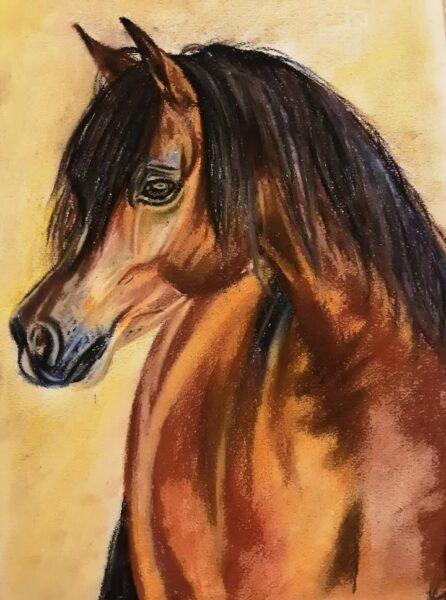
The critic Tiziano Rossetto writes: “It is the ancient and never-dormant love for horses that induces Giada Gaiotto to represent splendid examples of quadrupeds; the steeds are depicted with ‘sacred’ admiration and with care for the nuances of character.”
I certainly owe to Professor Paolo Belgioioso the attention to the anatomy of the horse and its precise design and to Professor Radu Dragomirescu, teacher of oil painting at the Academy, for having educated a particular sensitivity in portraying horses.
In the two-year specialization course in painting, I then dedicated myself with Professor Marco Cingolani to the portrait… Human, with a project that superimposes a series of elements that characterise the world of that person onto the face and I chose the profession of portraitist, ranging from animal friends to human ones and using different techniques from time to time such as graphite, oil, pastel and watercolour.
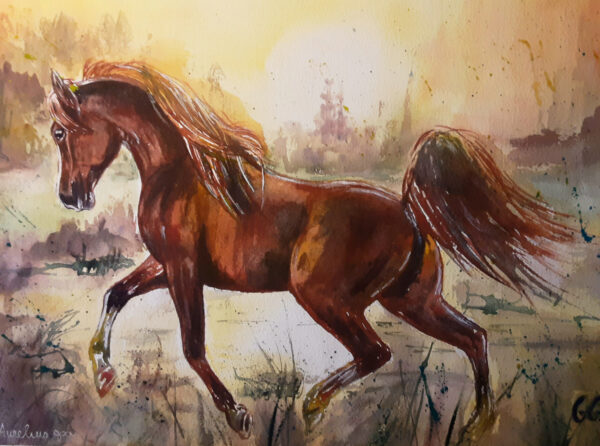
Observation from life is always fundamental, but well-defined photographs are enough to create portraits. Some say that you need special eyes to reconstruct the right expression, and perhaps they came to me as a gift. Scientific studies on “mirror neurons” demonstrate that an innate process of empathic participation occurs before arriving at understanding a face in its uniqueness and giving it three-dimensionality in painting it.
It is surprising to see how for an ordinary observer the paintings of horses all appear to be of ‘Arabian horses’, for example, but in this case, there is already a more specific knowledge of the various equine breeds, while breeders, jockeys and owners immediately call them by name, because a complex of small proportions and mental images make the portrayed specimens recognisable!
